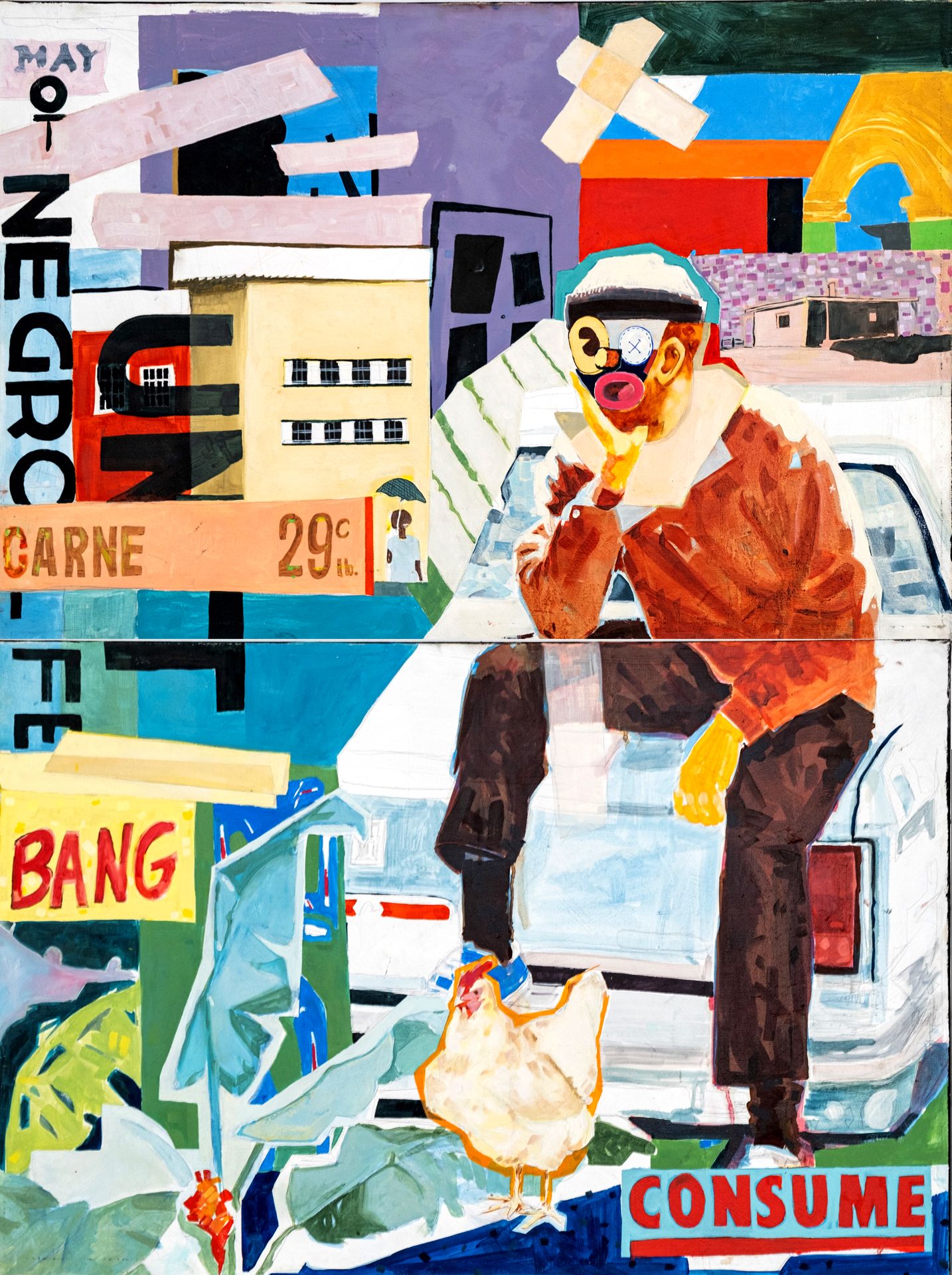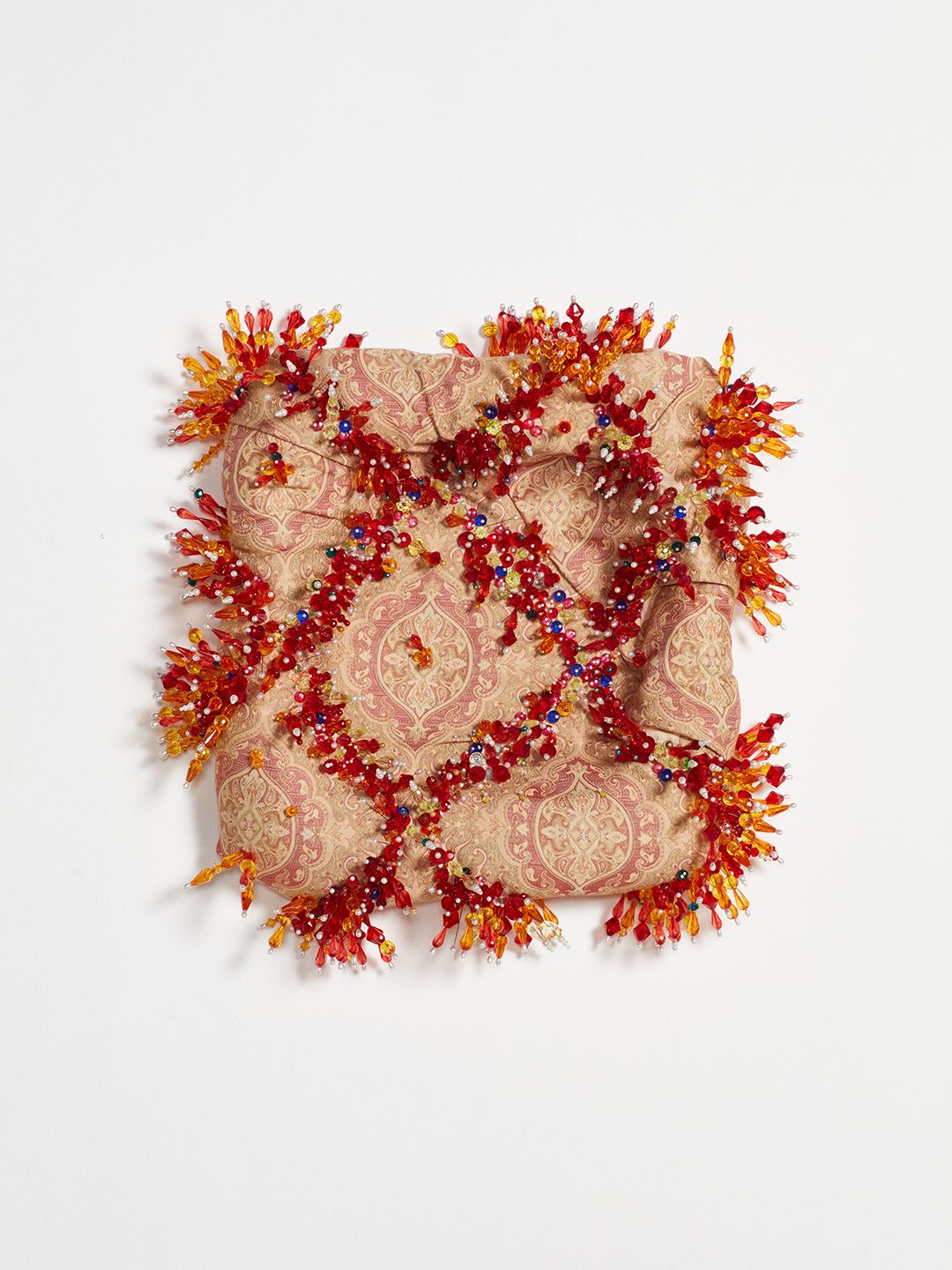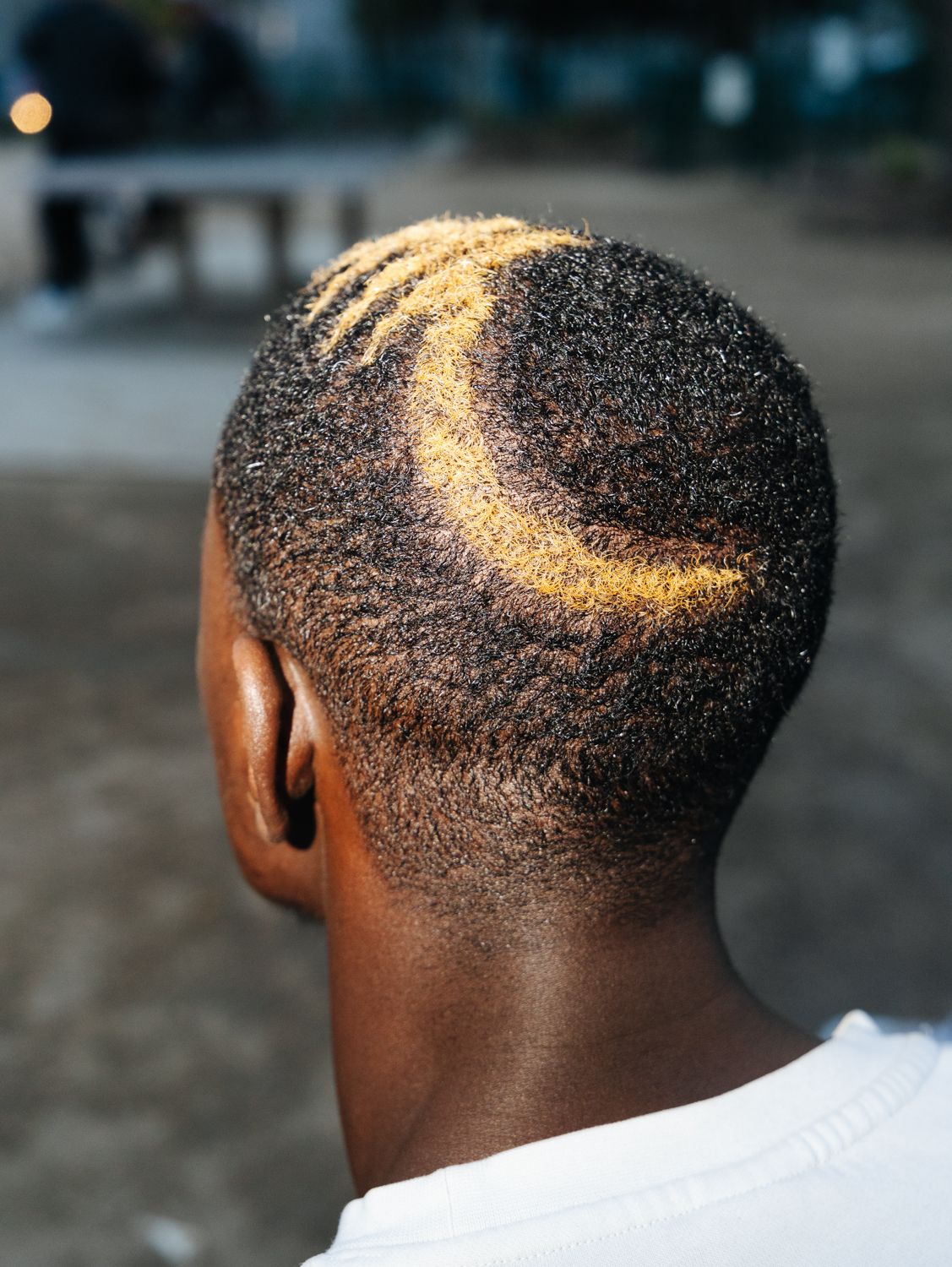What are we all even doing here? / on Group Exhibitions
by Denzo Nyathi
RMB Latitudes Art Fair's Independent Artist Exhibition, AKA: INDEX will bring together an exciting group of independent artists from South Africa, the African region, and the diaspora.
In its second year as a platform, INDEX continues to push towards subversion. Defying the common rules that require artists to be presented by a gallery at a fair, INDEX strives towards the breaking of those barriers to entry which exclude independent artists from art fair participation. This platform manifests itself as a group exhibition, The Orchid and The Wasp: Thin Lines of Becoming and in an ironic twist of requirements, necessitates that the featured artists be independent artists.
INDEX curator Denzo Nyathi shares his thoughts in this article.

---------
In attempts to map out the landscape of contemporary art on the African continent, one might find that the curator occupies a nebulous position. Existing in no man’s land, between institution, artist and audience, it can be particularly difficult to understand what demands to make of the curator. To whom are they (or should they be) most loyal, amidst these various entities they stand between? The answer to this question might not be on the horizon any time soon, as their work so often dabbles in the realm of the immaterial. A far cry from the would-be-fun understanding of the curator as the person who spends all day saying ‘a little to the left, and now a little to the right’, the curator’s actual work is far too often administrative, at the best of times conceptual, and more necessary than some would like to admit: commercially-concerned.

Nathaniel Sheppard, Chapeto, 2023, R 45,000.00 ex. VAT, CONTACT TO BUY
All things considered, the curator can be called to the expectation of one task: simply, to think (as simply as such a thing can be, that is). To think of all of the various partners they must engage; and to think of the artists they work with; and to think of the work they are entrusted with; to think of how best to care for this work; and the audience that might see it, and how they might think of it, and, and, and. This immaterial realm of thought is both dauntingly and delightfully abundant.
Yet, in the aforementioned landscape of contemporary art in South Africa’s case at least, certain exhibition formats and procedures have come to be so standardised that they do the exact opposite work of inspiring thought. Whether traversing art capitals’ Jan Smuts Avenue or Church Street, every gallery has on some group exhibition, and every other gallery has on some solo exhibition. Naturally, an exhibition must either be a group exhibition or a solo exhibition, but the sheer number and fast output of exhibitions leaves little time as to think about some possible significance embedded in the decision to go with either one. In the case of the group exhibition, a recent curatorial concern of mine has been what is communicated by the bringing together of these - more likely than not - strangers. The arts will rarely orchestrate a gathering that opens with “I bet you’re wondering why I gathered you all here today”.
From the perspective of the business of arts, the group exhibition acts as a kind of Litmus test in ascertaining the career position of an artist. While the solo exhibition is often times used as a marker of further advancement in an artist’s career - by virtue of their ability to pull a crowd all on their own - the group exhibition is useful in understanding an artist’s career in relativity. Established artist are exhibited alongside established artist; emerging stars shine beside one another. In the most exciting and daring of cases, established and emerging artists are exhibited together in a dialogue, subverting market expectations.
Such ventures march to the drum of their own beat. An entire two-person marching band of their own, RESEVOIR Projects relishes in their self-given freedom to act in ways other older institutions might not. “Unlike many of our gallery friends in the artworld, RESERVOIR does not hold a fixed stable of artists, offering an alternative when grouping artists together for our various projects. For example, it would be the expectation of galleries to craft group shows with artists that they represent. For RESERVOIR the curatorial premise and project scope guides us in terms of who we draw into the presentations,” shared co-founder, Heinrich Groenewald. “[Group shows] offer a sense of what an artist is indeed capable of, and how far their creative span actually reaches,” Groenewald offered further. He says this as RESEVOIR Projects prepare an exciting presentation of work for RMB Latitudes Art Fair, featuring Bulumko Mbete, Cathy Abrahams, Michele Mathison and Mikhailia Petersen. As fate would have it, the group’s members have never shown alongside one another. “It’s another layer to what group shows can offer. It’s like, ‘Oh, there are more curatorial layers!’ There’s more thinking, there’s more concept in the artist’s practice, [....] than when it’s all within one kind of language that permeates in the context of solo presentations.”

Sahlah Davids, Embraced, 2022, Price on request, CONTACT TO BUY
Of course, it’s not always a feast for curious minds. Regretfully, Groenewald observes “more often than not, we see galleries produce somewhat lazy headings to simply plonk artists together without a committed consideration of how the works relate to one another - think December openings called 'Summer Show', or the likes. There's been a couple over the years…”
“I really do believe in group shows,” the curator concluded, in spite of the reservations they have about reductive practices of group shows.
Joining RESEVOIR Projects in their optimistic outlook of group exhibitions, FEDE’s Lebo Kekana see's the format as beneficial for younger artists.
“In terms of concept, and how it spreads an idea, a lot of the time I’ll approach a very central idea and have different artists reflect different facets of that idea,” Kekana, FEDE founder and curator, shared. “I often think of it in terms of the Johannesburg space and the Cape Town space. I think there’s a specific taste and a specific sensibility each locale has [...] I think having those kind of artists together then brings together different perspectives, which feeds either party in different ways.”
In its second year as a platform, RMB Latitudes’ INDEX continues to push towards subversion. Defying the common rules that require artists to be presented by a gallery at a fair, INDEX strives towards the breaking of those barriers to entry which exclude independent artists from art fair participation. This platform manifests itself as a group exhibition, and in an ironic twist of requirements, necessitates that the featured artists be independent artists. In its 2024 articulation - under my own curatorial direction - the show takes on a constructivist interest. It takes an interest in the weight of these words, which bear the power to build fairs around us as we know them. What does it mean to be independent, when independent artists so often practice in collectivity, and form quasi-institutions of their own? What does it mean to be a part of a group exhibition, amongst a seemingly unrelated cohort of people, and thus highlighting difference? What does it mean for independent artists - who might occupy the margins of the commercial art sector - to occupy space in the beating heart of the commercial art sector, i.e. a fair?
The exhibition, entitled The Orchid and The Wasp: Thin Lines of Becoming, nestles itself between ‘us’ and ‘them’, noting how those imagined entities might, and often do, touch. At its root, INDEX 2024 questions the idea of belonging. Returning the spotlight the the curator once again, it has even been asked if/where the curator(ial) belongs in the art fair.
This issue of what it means to belong is taken beyond contemplating how it is we might fit into the skew-built-boxes of art speak. The artists in this exhibition come from all walks of life (and across the continent), but are united at the point of contemplation around the complexity of where we belong. For some, the contemplation is the complexity of belonging within racial identity (as with Chuma Adam and Nathaniel Sheppard). Some artists find themselves between the history and culture of the past, and how it fits with their contemporary experiences (see Thero Makepe and Ayanfe Olarinde). Similarly, others (Sahlah Davids and Lorraine Kalassa) consider this even more intimately, with family as reference. In other artists’ work, things as material as the glass of cellphone (Chloe Shain) or hard edges of metal fencing (Ntsako Nkuna) are physical manifestation of the paradoxes of belonging/division we are so entrenched in. And materialising the very self-referential basis of this exhibition, Kutti Collective produces work that thinks through the fact of being in collectivity.

Thero Makepe, Half Moon in Ivry, 2023, price on request, CONTACT TO BUY
While The Kutti Collective’s ability to transverse distance and the reality of difference is in some way inspiring, this exhibition does not neglect the full range of joys and problems that come with this way of working. Makepe - of The Botswana Pavillion - admits to the rewarding but challenging nature of collective practice, noting that collective’s agenda was also to push unheard of narratives of Botswana.
Makepe was also selected as a 2024/2025 FOAM Talent, with a feature in FOAM Museum’s exhibition, amongst 18 other honoured artists from around the world. “Everyone just came with a spirit of celebrating each other’s work,” Makepe rejoiced. At points, Makepe noted very evident conceptual links between himself and other artists of the cohort; and at other points, the interest was in the stark difference in subject matter and approach.
From his account, the FOAM exhibition seemed to do what a group exhibition at its best can do: collage. It brought together mismatched pieces of different textures and tones, and made something new altogether. Like memory (which too is like collage), there will be moments in which two things feel so similar although completely removed from each other, in that way that deja vu is so strange and exciting. Conversely, like deja vu’s lesser-known but equally creepy counterpart, jamais vu, the group exhibition should present the familiar in a context which makes it feel completely anew, as Groenewald had suggested group exhibitions do.
Such is the entice. The question of “what are we all even doing here”, is what likely continues to bring us together, as art audiences, curators, artists and organisers alike. At the very least, it would be far less fun to rave about or complain about art if we read in isolation a piece from its contemporary moment, our artists from their peers, and these practices from their industry. Such is the devilish, delicious entice of it all.
Meet the 2024 RMB Latitudes INDEX Artists
Further Reading In Articles
African Artist Directory






























